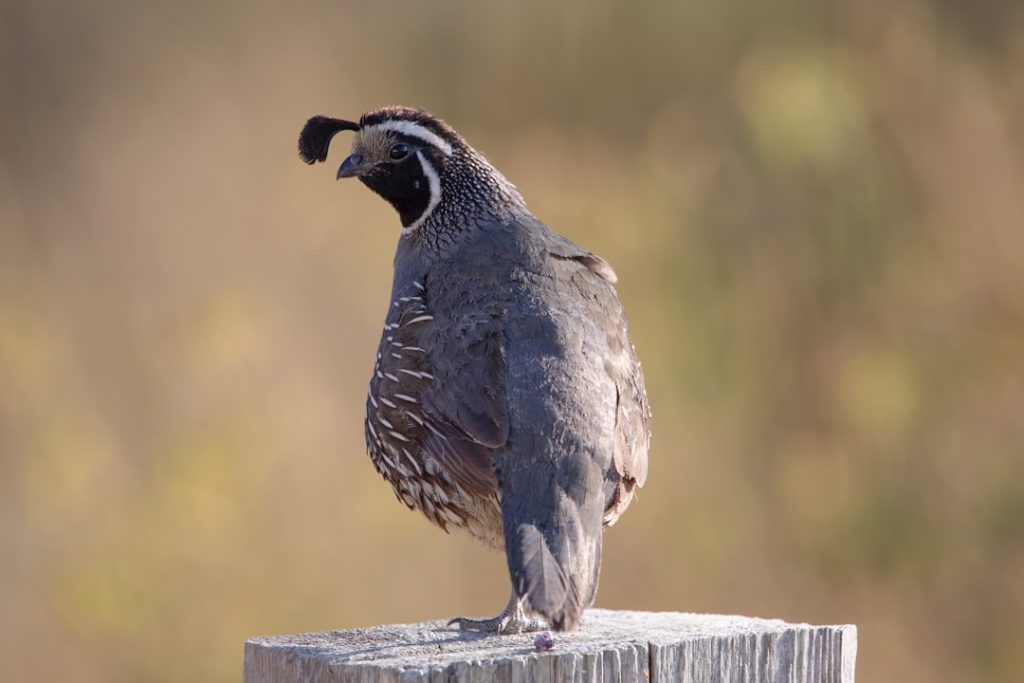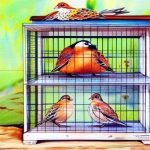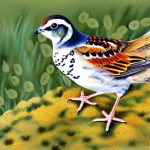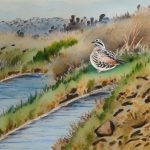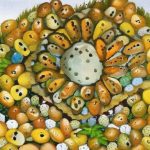Inbreeding is a common practice in Coturnix quail breeding, and it involves the mating of closely related individuals within the same genetic line. This can lead to an increase in homozygosity, which means that the offspring are more likely to inherit two identical copies of a gene, one from each parent. Inbreeding can be a useful tool for fixing desirable traits within a population, as it allows breeders to concentrate specific genes and traits. However, it also comes with potential risks, such as the expression of deleterious recessive genes and a decrease in genetic diversity within the population.
Inbreeding depression is a phenomenon that occurs when the offspring of closely related individuals exhibit reduced fitness and health. This can manifest as decreased fertility, lower growth rates, and increased susceptibility to diseases. Inbreeding depression is a result of the expression of harmful recessive alleles that are more likely to be inherited when closely related individuals are mated. Understanding the genetic makeup of the quail population is crucial for managing inbreeding, as it allows breeders to make informed decisions about which individuals to mate in order to minimize the negative effects of inbreeding.
Table of Contents
- 1 Risks and Benefits of Inbreeding in Coturnix Quail
- 2 Techniques for Managing Inbreeding in Coturnix Quail Breeding
- 3 Genetic Considerations in Coturnix Quail Breeding
- 4 Potential Effects of Inbreeding on Coturnix Quail Health and Productivity
- 5 Best Practices for Avoiding Negative Effects of Inbreeding in Coturnix Quail
- 6 Balancing Inbreeding in Coturnix Quail Breeding for Success
- 7 FAQs
Key Takeaways
- Inbreeding in Coturnix quail breeding refers to the mating of closely related individuals within the same genetic line.
- Risks of inbreeding in Coturnix quail include increased expression of harmful genetic traits and reduced genetic diversity, while benefits include the potential for fixing desirable traits in the population.
- Techniques for managing inbreeding in Coturnix quail breeding include maintaining detailed breeding records, implementing controlled mating systems, and utilizing genetic testing to identify potential genetic issues.
- Genetic considerations in Coturnix quail breeding involve understanding the genetic makeup of the breeding stock, identifying desirable and undesirable traits, and implementing selective breeding practices.
- Potential effects of inbreeding on Coturnix quail health and productivity include increased susceptibility to diseases, reduced fertility, and decreased overall productivity.
- Best practices for avoiding negative effects of inbreeding in Coturnix quail breeding include outcrossing with unrelated individuals, maintaining a diverse breeding stock, and regularly monitoring the genetic health of the population.
- In conclusion, balancing inbreeding in Coturnix quail breeding for success involves careful management of genetic diversity, selective breeding for desirable traits, and proactive measures to minimize the negative effects of inbreeding.
Risks and Benefits of Inbreeding in Coturnix Quail
Inbreeding in Coturnix quail breeding comes with both risks and benefits that breeders need to consider. One of the main benefits of inbreeding is the ability to fix desirable traits within a population. By mating closely related individuals, breeders can concentrate specific genes and traits, leading to a more uniform and predictable offspring. This can be particularly useful when trying to establish a new genetic line with specific characteristics, such as high egg production or certain plumage coloration. Inbreeding can also help to reveal hidden genetic potential within a population, as it allows breeders to identify and select for desirable traits that may not be immediately apparent.
However, inbreeding also comes with significant risks that can impact the health and productivity of the quail population. One of the main risks is the potential for inbreeding depression, which can lead to reduced fitness and health in the offspring. Inbreeding depression is caused by the expression of harmful recessive alleles that are more likely to be inherited when closely related individuals are mated. This can result in decreased fertility, lower growth rates, and increased susceptibility to diseases, ultimately impacting the overall productivity of the quail population. Additionally, inbreeding can lead to a decrease in genetic diversity within the population, making it more vulnerable to environmental changes and disease outbreaks.
Techniques for Managing Inbreeding in Coturnix Quail Breeding
Managing inbreeding in Coturnix quail breeding requires careful planning and consideration of the genetic makeup of the population. One technique for managing inbreeding is the use of pedigree analysis to assess the relatedness of individuals within the population. By examining the pedigrees of potential breeding pairs, breeders can identify closely related individuals and make informed decisions about which pairs to mate in order to minimize the risk of inbreeding depression. Pedigree analysis can also help breeders to track the inheritance of specific traits and genes within the population, allowing for more targeted breeding programs.
Another technique for managing inbreeding is the use of outcrossing to introduce new genetic material into the population. Outcrossing involves mating individuals from different genetic lines or populations in order to increase genetic diversity and reduce the risk of inbreeding depression. By introducing new alleles into the population, breeders can help to mitigate the negative effects of inbreeding and maintain a healthy and productive quail population. However, it is important to carefully select outcrossing partners to ensure that they do not introduce undesirable traits or genes into the population.
Genetic Considerations in Coturnix Quail Breeding
Genetic considerations play a crucial role in Coturnix quail breeding, particularly when it comes to managing inbreeding and maintaining a healthy and productive population. One important genetic consideration is the presence of deleterious recessive alleles within the population. These harmful alleles can lead to inbreeding depression when closely related individuals are mated, resulting in reduced fitness and health in the offspring. By understanding the frequency and distribution of these deleterious alleles within the population, breeders can make informed decisions about which individuals to mate in order to minimize the risk of inbreeding depression.
Another genetic consideration is the overall genetic diversity within the quail population. Genetic diversity is important for maintaining a healthy and adaptable population, as it allows for greater resilience to environmental changes and disease outbreaks. Inbreeding can lead to a decrease in genetic diversity within the population, making it more vulnerable to these external pressures. By carefully managing inbreeding and introducing new genetic material through outcrossing, breeders can help to maintain a diverse and resilient quail population.
Potential Effects of Inbreeding on Coturnix Quail Health and Productivity
Inbreeding can have significant effects on the health and productivity of Coturnix quail populations. One potential effect is a decrease in fertility and hatchability rates. Inbred individuals are more likely to exhibit reduced fertility, leading to lower egg production and hatchability rates within the population. This can impact the overall productivity of the quail population, making it more difficult for breeders to maintain consistent levels of egg production and meet market demands.
Inbreeding can also lead to an increase in susceptibility to diseases and parasites within the quail population. Inbred individuals are more likely to exhibit reduced immune function and increased susceptibility to infectious agents, making them more vulnerable to disease outbreaks. This can have significant impacts on the overall health and welfare of the quail population, as well as on the economic viability of quail breeding operations. By carefully managing inbreeding and maintaining genetic diversity within the population, breeders can help to mitigate these potential effects and maintain a healthy and productive quail population.
Best Practices for Avoiding Negative Effects of Inbreeding in Coturnix Quail
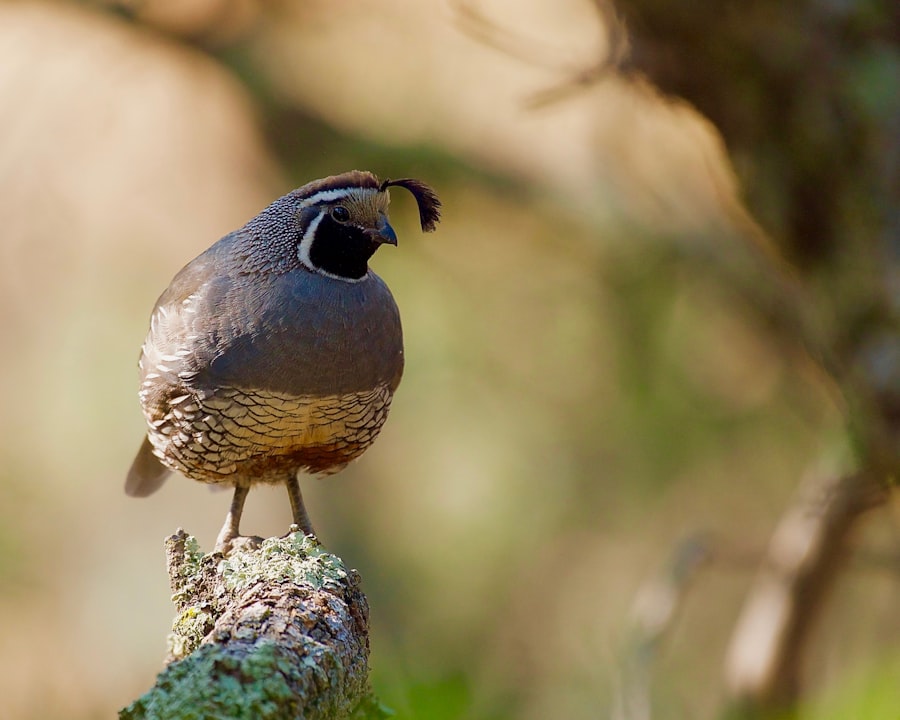
There are several best practices that breeders can implement to avoid the negative effects of inbreeding in Coturnix quail populations. One best practice is the use of pedigree analysis to assess the relatedness of potential breeding pairs. By carefully examining pedigrees and identifying closely related individuals, breeders can make informed decisions about which pairs to mate in order to minimize the risk of inbreeding depression. This can help to maintain the overall health and productivity of the quail population while still allowing for targeted breeding programs.
Another best practice is the implementation of outcrossing programs to introduce new genetic material into the population. Outcrossing involves mating individuals from different genetic lines or populations in order to increase genetic diversity and reduce the risk of inbreeding depression. By carefully selecting outcrossing partners and monitoring the inheritance of specific traits, breeders can help to maintain a diverse and resilient quail population while still working towards specific breeding goals.
Balancing Inbreeding in Coturnix Quail Breeding for Success
In conclusion, inbreeding is a common practice in Coturnix quail breeding that comes with both risks and benefits. While it can be a useful tool for fixing desirable traits within a population, it also comes with potential risks such as inbreeding depression and a decrease in genetic diversity. By carefully managing inbreeding through techniques such as pedigree analysis and outcrossing, breeders can help to maintain a healthy and productive quail population while still working towards specific breeding goals. It is important for breeders to consider genetic considerations and potential effects of inbreeding on health and productivity when making breeding decisions, as well as implementing best practices for avoiding negative effects of inbreeding. By balancing these factors, breeders can achieve success in Coturnix quail breeding while maintaining a diverse and resilient population for future generations.
If you’re interested in learning more about coturnix quail breeding and inbreeding, you may also want to check out an article on Poultry Wizard that discusses the vegetables that quails eat. Understanding the dietary needs of quails is essential for successful breeding and raising healthy birds. You can find the article here.
FAQs
What is inbreeding in coturnix quail breeding?
Inbreeding in coturnix quail breeding refers to the mating of closely related individuals within the same genetic line. This can lead to an increase in the expression of harmful recessive traits and a decrease in genetic diversity within the population.
What are the potential risks of inbreeding in coturnix quail breeding?
Inbreeding in coturnix quail breeding can lead to a higher incidence of genetic disorders, reduced fertility, and decreased overall health and vigor in the offspring. It can also limit the ability of the population to adapt to changing environmental conditions.
How can inbreeding be managed in coturnix quail breeding?
Inbreeding in coturnix quail breeding can be managed by implementing a structured breeding program that emphasizes genetic diversity and avoids mating closely related individuals. This can be achieved through the use of pedigree records, genetic testing, and the introduction of new genetic lines.
What are the benefits of avoiding inbreeding in coturnix quail breeding?
Avoiding inbreeding in coturnix quail breeding can help maintain the overall health and vitality of the population, reduce the incidence of genetic disorders, and improve the long-term sustainability of the breeding program. It can also lead to the production of stronger and more resilient offspring.
Meet Walter, the feathered-friend fanatic of Florida! Nestled in the sunshine state, Walter struts through life with his feathered companions, clucking his way to happiness. With a coop that’s fancier than a five-star hotel, he’s the Don Juan of the chicken world. When he’s not teaching his hens to do the cha-cha, you’ll find him in a heated debate with his prized rooster, Sir Clucks-a-Lot. Walter’s poultry passion is no yolk; he’s the sunny-side-up guy you never knew you needed in your flock of friends!

